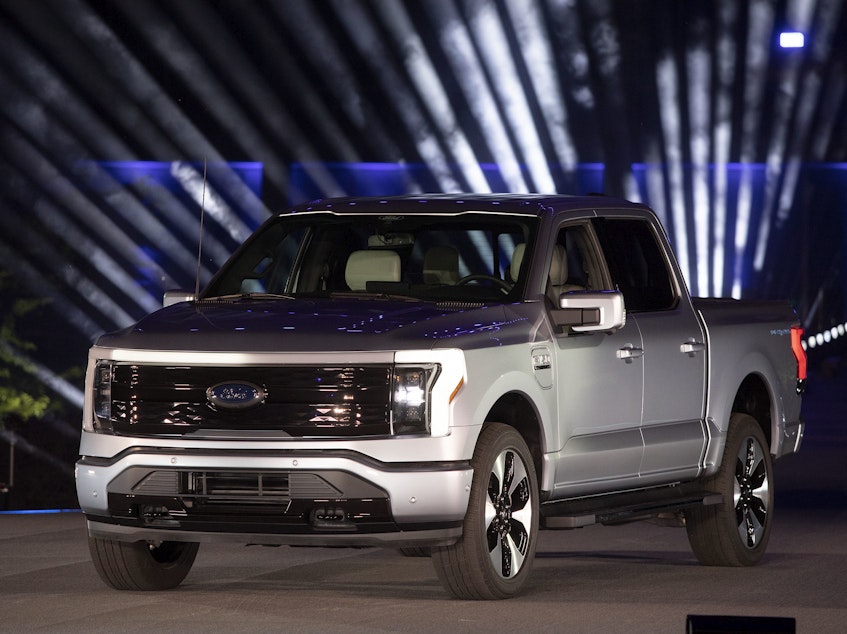Ford Says Electric F-150 Will Start Under $40,000. It Can Also Power Your Home

There was some lofty rhetoric when Ford and the United Auto Workers union revealed the all-electric F-150 Lighting pickup in Dearborn, Mich., on Wednesday.
A solemn voiceover declared it "an electric truck that can match the ambitions of this nation."
Ford CEO Jim Farley made a simpler case: "It hauls ass and tows like a beast."
Ford is touting the much-anticipated vehicle as not just a pickup, but a mobile power plant — with a price tag designed to draw mainstream attention.
The Lightning has a starting price of just under $40,000, lower than what was widely expected, making it roughly competitive with gas-powered pickups (which currently average more than $50,000).
When you factor in a federal tax credit, which Ford qualifies for and Tesla no longer does, it's the cheapest electric pickup confirmed so far.
Jessica Caldwell, executive director of insights at car data company Edmunds, calls that price "compelling," noting that Ford has the advantage of "economies of scale that most companies — particularly smaller, newer entrants to this space — can only dream of."
The F-150 Lightning will have a range of 230 or 300 miles, depending on the battery choice, and can add 54 miles of range for every 10 minutes on a fast charger. Those are not eye-popping figures — other automakers are making more ambitious promises for their battery-powered pickups.
But in addition to touting towing capacity, speedy acceleration and other on-road essentials, Ford is emphasizing what the Lightning can do at a standstill — namely, run a worksite or power a home during an emergency.
Eleven built-in outlets allow drivers to run multiple power tools at a work site or kitchen appliances at a campsite. (The new hybrid F-150 offers a similar feature).
And when it's plugged in at home and the power goes out, the Lightning can automatically send electricity back into your home, keeping the lights on for days, Ford says. That potential selling point that may be particularly appealing just months after devastating storms in Texas caused prolonged blackouts, which CEO Jim Farley explicitly referenced during the unveiling.
This kind of bidirectional flow of power has always been a hypothetical advantage of electric vehicles — when they aren't actively driving, they're giant, charged-up batteries. But for most current electric vehicle owners, it's not easy to access that energy.
Ford isn't the only automaker who wants to change that. Hyundai and Kia are also marketing bidirectional charging as a feature of their new electric vehicles. [Copyright 2021 NPR]



